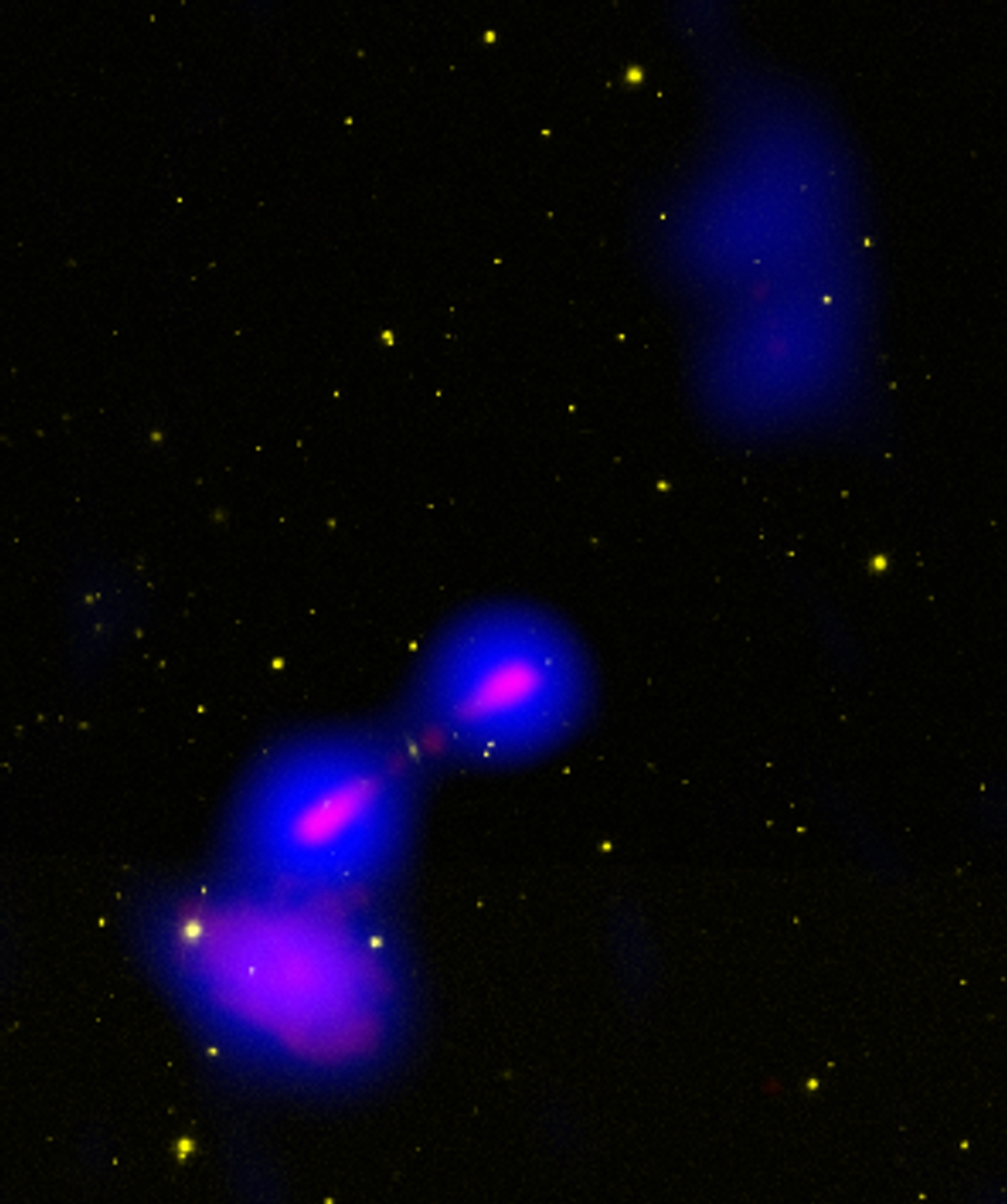'Exotic Galaxy' With Black Hole Heart Wows Astronomers

A strange, newfound galaxy may help astronomers figure out how black holes and star formation evolved in the early universe, according to a new study.
The spiral galaxy, dubbed Speca, boasts fast-moving jets of particles rushing from its center, a phenomenon more commonly observed in elliptical galaxies. In fact, Speca is just the second spiral known to have such jets.
These jets are spawned by a supermassive black hole at the heart of Speca. Researchers hope studying the galaxy will yield insights into black holes, star birth and the interaction between the two.
"This is probably the most exotic galaxy with a black hole ever seen," said the study's principal investigator Ananda Hota, of the Academia Sinica Institute of Astronomy and Astrophysics (ASIAA), in Taiwan, in a statement. "It has the potential to teach us new lessons about how galaxies and clusters of galaxies formed and developed into what we see today." [Photo of the spiral galaxy Speca]
A strange radio galaxy
Speca — whose name is short for Spiral-host Episodic radio galaxy tracing Cluster Accretion — is found about 1.7 billion light-years from Earth. In addition to being a spiral, it's what's known as a radio galaxy.
At the heart of a radio galaxy lies a supermassive black hole. Material surrounding it is thrust outward at relativistic speed, forming jets that shine brightly at radio frequencies. [Images: Black Holes of the Universe]
Breaking space news, the latest updates on rocket launches, skywatching events and more!
These relativistic jets aren't constant; they ebb and flow with time, likely dependent on the material that fuels them. Over time, the material diffuses into lobes, much as water flowing from a hose spreads out as it slows down.
Most radio galaxies discovered to date are elliptical. Elliptical galaxies tend to be old, without a lot of new star formation, while spirals host much more star birth. So it's intriguing, researchers said, to find a jet-spewing spiral; studying Speca could help them better understand how spirals morph into ellipticals over time.
"How black holes stop star formation is still not observed," Hota said. "Speca is an opportunity to investigate these details."
Speca's structure
Astronomers used a variety of telescopes to characterize Speca, finding that it boasts three pairs of lobes. Such a high count is rare even among ellipticals, and it provides clues about the evolution of Speca.
According to Hota, the smallest, closest pair is most likely only a few million years old. The middle lobes fall between 10 and 100 million years old.
But it is the outermost pair that yields the biggest surprise. With an age of several hundred millionyears, the cloud of material spewing from the center of the galaxy diffused long ago, becoming less active over the years.
At some point, however, the material collided with energetic particles streaming throughthe galaxy cluster surrounding Speca. These collisions revived the ancient remnants, providing astronomers with a greater understanding of the environment within the cluster.
The research was published in the August issue of the Monthly Notices of the Royal Astronomical Society.
Understanding star formation
Spiral galaxies eventually transform into ellipticals, and Hota thinks the presence of jets may affect this shift.
"What I believe is that this trend of radio galaxies found always in ellipticals and not in spirals is an end-product of multiple galaxy mergers and multiple episodes of jet feedbacks, happening over a few billion years time," Hota said.
The two combined phenomonena would slowly consume the materials needed for star formation, allowing a spiral galaxy to morph into an elliptical. This meshes well with current theories about how ellipticals form; the ejection of material simply speeds the process along.
"These jets are supposed to remove a large fraction of gas from a galaxy and stop further star formation," Hota said. "If the galaxy is gas-rich in the central region, and as the jet direction changes with time, it can have an adverse effect on the star formation history of a galaxy."
Speca provides astronomers with an opportunity to study the effect of the jets on a young galaxy. Since they stem from the supermassive black hole at the galaxy's center, it reveals a connection between the powerful behemoth and the birth of new stars.
"Once we understand how star formation and black hole activity evolved with time, we will have clues on the co-evolution processes," Hota said.
Visit SPACE.com for the latest in space science and exploration news on Twitter @Spacedotcom and on Facebook.

Nola Taylor Tillman is a contributing writer for Space.com. She loves all things space and astronomy-related, and always wants to learn more. She has a Bachelor's degree in English and Astrophysics from Agnes Scott College and served as an intern at Sky & Telescope magazine. She loves to speak to groups on astronomy-related subjects. She lives with her husband in Atlanta, Georgia. Follow her on Bluesky at @astrowriter.social.bluesky

